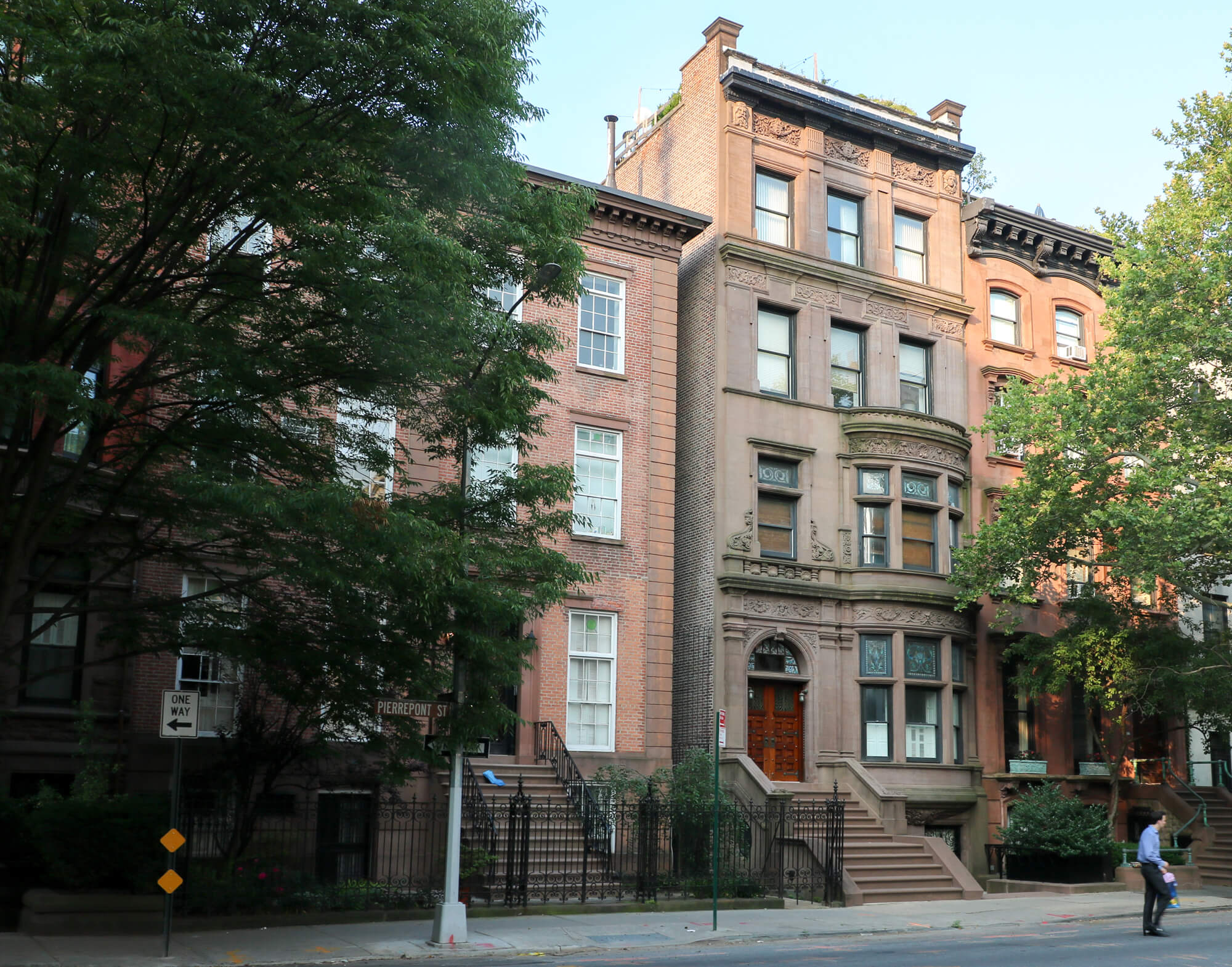The Up and Down History of a Brooklyn Heights Brownstone
Like many Brooklyn neighborhoods, houses can come and go by the whim of the real estate gods.

Editor’s note: This story originally ran in 2015 and has been updated. You can read the previous post here.
Like many Brooklyn neighborhoods, houses can come and go by the whim of the real estate gods. Pierrepont Street in Brooklyn Heights has been built up, torn down and built up several times over its history.
104 Pierrepont Street was built in 1858. No doubt a similar house once stood here at 106 Pierrepont Street. But in 1882, the Real Estate Record and Builder’s Guide announced that this lot, at the head of Monroe Street, would become the new home of Mr. Aaron D. Farmer.

The four-story (plus basement, or ground floor) home was to be 25 by 55 feet, on a 100-foot lot. The house was to be designed by William Baker, a Manhattan architect who was around the same time building many fine upper class townhouses on the Upper West Side and in Harlem, on what is now Adam Clayton Powell Boulevard, between 117th and 118th streets.
Mr. Farmer was in the printing business, and his occupation in city directories is listed as “type” or “type founder.” He was doing quite well, and was listed in the papers as one of Brooklyn’s wealthier men. This house cost him $70,000 to build, a princely sum in 1882, when the average house cost around $12,000 to build.

The house notice in the Real Estate Guide noted that the house would have its formal dining room at the rear, looking out onto a flower garden. It would have a private servant’s staircase there that would lead to their sleeping quarters at the back of the second story extension. The house would have hardwood trim throughout, and be fitted with electric clocks and bells.
Five years later, the Brooklyn Eagle reported that a new extension was being added to the house. It measured 20 by 30 feet, and was in the “Colonial Style.” The extension would have maple and mahogany woodwork, with large oak mantles and fireplace surrounds. The room had a domed ceiling and a rounded bay. The bay had couches with “portable pillows,” which perhaps meant a curved window seat.

The domed ceiling had cornices and molding in ornamental stucco, and were painted in turquoise and gold. The floor had a Dagestan rug, and the entire project had been designed and executed by interior designer A. Korber.
Unfortunately, A.D. died in the early 1890s, perhaps after finding out his unpaid property taxes, along with those of many other rich Brooklynites, were the topic of an article in the Eagle in 1892. He owed $5,000. Mrs. Farmer also died in 1892. The house went to their son, William W. Farmer, a partner in the type business. He sold it, and apparently moved to Manhattan.

In 1901, the house was being advertised as a foreclosure auction sale. It was sold again in 1904, and then again in 1926, with a huge sale of its furnishings, as advertised in the Eagle. The house and contents had belonged to the now late Mrs. Mary S. Croxson.
By 1928, the house was headquarters for the Michael Laura Club, an Italian-American political club affiliated with the Democratic Party. There was a small fire here in October of that year, but it didn’t do very much damage.

In 1932, infighting in the club caused Michael Laura and his faction to leave (now that’s a story!) and the remaining members renamed themselves the Columbian League. They technically squatted in their space, and a lawsuit was filed. In July of 1932, the property went up for auction and was purchased by a Manhattan real estate developer named Joseph Kottler. He allowed the Columbian League to stay on the premises.
Today the house is a three-family. A walk by the house one day, when the front door was open, revealed a wealth of original detail still in the house, at least in the hallway. It was magnificent.

[Photos by Susan De Vries unless noted otherwise]
Related Stories
- The House That Hats Built, a Queen Anne Manse in Brooklyn Heights
- The Heights Casino, Built for Squash Not Slots
- Saints, Sinners and Survivors Once Flocked to This Stone Mansion on Pierrepont Street (Photos)
Email tips@brownstoner.com with further comments, questions or tips. Follow Brownstoner on Twitter and Instagram, and like us on Facebook.









What's Your Take? Leave a Comment